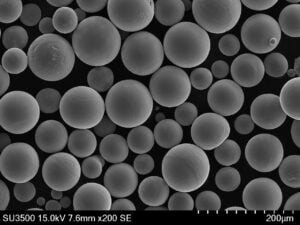Complex Ventilation System Nozzles: Revolutionizing Airflow with Metal 3D Printing
Spis treści
Ventilation systems are the unsung heroes of countless industries, ensuring air quality, temperature regulation, and the efficient removal of contaminants. At the heart of these systems lie the nozzles, critical components that dictate the direction, velocity, and distribution of airflow. Traditionally manufactured, these nozzles often face limitations in design complexity and material optimization. However, the advent of metal 3D printing, also known as metal additive manufacturing, is ushering in a new era of innovation, allowing for the creation of intricate and high-performance complex ventilation system nozzles tailored to specific industrial needs. This blog post explores the transformative potential of metal Drukowanie 3D in the production of these essential components, highlighting the benefits, material considerations, and how partnering with a trusted provider like Metal3DP can unlock unprecedented design freedom and performance enhancements.
What are Complex Ventilation System Nozzles Used For?
Complex ventilation system nozzles play a vital role across a diverse range of industries, each with unique airflow management requirements. Their applications are widespread and critical for operational efficiency, safety, and product quality. Here are some key use cases:
- Aerospace: In aircraft cabins, precisely engineered nozzles ensure even air distribution for passenger comfort and environmental control. They are also crucial in cooling electronic equipment and managing airflow within engine compartments. The ability to create lightweight and geometrically optimized nozzles through metal 3D printing is particularly advantageous in this sector.
- Motoryzacja: From climate control systems within vehicle interiors to cooling systems for critical engine components and battery packs in electric vehicles, complex nozzles enable optimized thermal management and airflow. Additive manufacturing allows for the creation of nozzles with intricate internal channels for efficient heat exchange.
- Medyczne: In cleanrooms and pharmaceutical manufacturing facilities, maintaining strict air quality and preventing contamination is paramount. Custom-designed nozzles ensure laminar airflow and precise air curtain generation. Metal 3D printing facilitates the use of biocompatible materials and intricate designs for these sensitive applications.
- Produkcja przemysłowa: Numerous industrial processes rely on controlled airflow for cooling machinery, removing dust and fumes, and ensuring consistent product quality in processes like painting and coating. Metal 3D printed nozzles can be designed for specific flow rates and patterns, optimizing these operations.
- Electronics Cooling: As electronic devices become more powerful and compact, effective thermal management becomes critical. Complex nozzle designs created with metal 3D printing can direct airflow precisely to hot spots, enhancing cooling efficiency and extending the lifespan of electronic components.
- HVAC (ogrzewanie, wentylacja i klimatyzacja): Beyond residential applications, industrial and commercial HVAC systems benefit from specialized nozzles for optimized air distribution in large spaces, ensuring energy efficiency and occupant comfort.
Wszechstronność complex ventilation system nozzles manufactured via metal 3D printing stems from the ability to tailor their geometry and material properties to the exact requirements of each application, offering significant advantages over traditional manufacturing methods.

Why Use Metal 3D Printing for Complex Ventilation System Nozzles?
Opting for metal 3D printing for the production of complex ventilation system nozzles offers a compelling array of advantages over conventional manufacturing techniques such as casting, machining, or injection molding. These benefits translate to improved performance, reduced costs, and faster innovation cycles for businesses across various sectors.
- Swoboda projektowania i złożoność: Metal 3D printing liberates engineers from the design constraints imposed by traditional manufacturing. Intricate internal channels, complex geometries, and optimized flow paths can be easily realized, leading to improved aerodynamic performance and efficiency of the nozzles. This capability is particularly valuable for creating custom ventilation solutions dostosowane do konkretnych potrzeb.
- Optymalizacja materiałów: Additive manufacturing allows for the use of high-performance metal alloys like AlSi10Mg and AlSi7Mg, which offer excellent strength-to-weight ratios, thermal conductivity, and corrosion resistance – crucial properties for demanding ventilation applications. Metal3DP’s range of high-quality metal powders ensures that the optimal material can be selected for the specific operating environment.
- Lekkość: Complex internal lattice structures and topology optimization, facilitated by metal 3D printing, enable the creation of lightweight nozzles without compromising structural integrity. This is particularly beneficial in aerospace and automotive applications where weight reduction translates directly to fuel efficiency and performance improvements.
- Szybkie prototypowanie i iteracja: Metal 3D printing significantly accelerates the prototyping process. Engineers can quickly design, print, and test nozzle iterations, allowing for faster design optimization and reduced time-to-market. This agility is crucial in rapidly evolving industries.
- Personalizacja i produkcja na żądanie: Additive manufacturing enables the production of highly customized nozzles in small to medium volumes without the need for expensive tooling. This is ideal for specialized applications or when dealing with fluctuating demand.
- Zredukowany montaż: Complex nozzle designs incorporating features that would traditionally require multiple assembled parts can be manufactured as a single unit using metal 3D printing. This reduces assembly time, lowers the risk of failure points, and improves overall reliability.
- Ulepszona wydajność: The design freedom afforded by metal 3D printing allows for the creation of nozzles with optimized fluid dynamics, resulting in more efficient airflow, reduced pressure drop, and improved overall system performance.
By leveraging the capabilities of metal 3D printing, businesses can achieve significant advancements in the design, performance, and manufacturing of complex ventilation system nozzles, unlocking new possibilities for their applications.
Recommended Materials and Why They Matter
The selection of the appropriate metal powder is paramount in achieving the desired performance characteristics for complex ventilation system nozzles. Metal3DP offers a range of high-quality metal powders, and for ventilation system nozzles, Aluminum Silicon Magnesium alloys like AlSi10Mg and AlSi7Mg are particularly well-suited due to their excellent combination of properties:
| Nieruchomość | AlSi10Mg | AlSi7Mg | Relevance to Ventilation Nozzles |
|---|---|---|---|
| Gęstość | ~2.68 g/cm³ | ~2.65 g/cm³ | Lightweighting is often a key requirement, especially in aerospace and automotive applications, where lower density contributes to improved efficiency. |
| Tensile Strength (Ultimate) | ~420 MPa (as-built) | ~380 MPa (as-built) | Ensures the nozzle can withstand the stresses and pressures encountered during operation. |
| Wytrzymałość na rozciąganie | ~270 MPa (as-built) | ~240 MPa (as-built) | Indicates the material’s resistance to permanent deformation under load, crucial for maintaining the nozzle’s shape and performance over time. |
| Przewodność cieplna | ~160 W/m-K | ~170 W/m·K | Important for applications where the nozzle might be involved in heat transfer, such as cooling systems. Efficient heat dissipation can enhance performance and longevity. |
| Odporność na korozję | Dobry | Dobry | Ventilation systems often operate in environments with varying humidity and potential exposure to corrosive substances. Good corrosion resistance ensures the longevity of the nozzle. |
| Obrabialność | Dobry | Dobry | Post-processing steps might be required to achieve specific surface finishes or tolerances. Good machinability facilitates these processes. |
| Spawalność | Generally good | Generally good | While 3D printing minimizes the need for welding, good weldability can be important for integration with other system components. |
| Zastosowania | Aerospace components, automotive parts, heat sinks, general engineering | Automotive parts, structural components, thin-walled parts, general engineering | Their versatility makes them suitable for a wide range of ventilation system applications across different industries. AlSi7Mg is often preferred for its slightly better castability and weldability. |
Eksport do arkuszy
Both AlSi10Mg and AlSi7Mg offer an excellent balance of mechanical and thermal properties, making them ideal candidates for high-performance ventilation system nozzles manufactured using Metal3DP’s advanced metal 3D printing technology. The specific choice between the two alloys will depend on the precise performance requirements and operating conditions of the application.
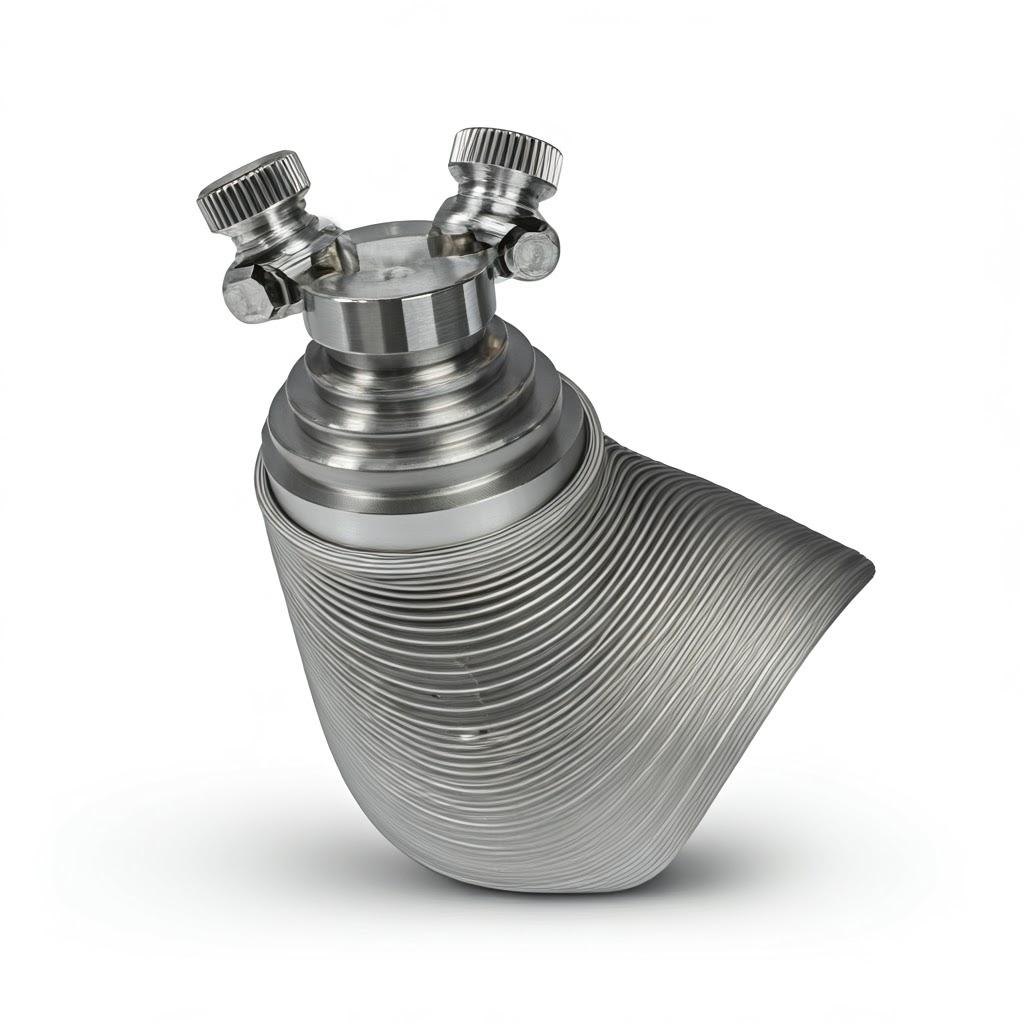
Design Considerations for Additive Manufacturing
Designing for metal 3D printing requires a different mindset compared to traditional manufacturing processes. To fully leverage the capabilities of additive manufacturing and achieve optimal performance for complex ventilation system nozzles, several key design considerations must be taken into account:
- Optymalizacja topologii: This computational technique allows for the creation of lightweight yet structurally sound designs by removing material from non-critical areas. For ventilation nozzles, topology optimization can lead to significant weight reduction and improved airflow efficiency by generating organic, free-form geometries that would be impossible to achieve with conventional methods.
- Struktury kratowe: Incorporating internal lattice structures within the nozzle walls can further reduce weight while maintaining stiffness and providing enhanced heat transfer capabilities. Different lattice patterns can be employed to tailor the mechanical and thermal properties of the nozzle to specific requirements.
- Generative Design: Utilizing AI-powered generative design software can explore a vast design space based on performance requirements and manufacturing constraints. This can lead to innovative and highly efficient nozzle geometries that human engineers might not have conceived.
- Internal Channels and Conduits: Metal 3D printing excels at creating intricate internal channels for fluid flow or cooling. For ventilation nozzles, this opens up possibilities for optimizing airflow patterns, integrating sensors, or even incorporating cooling mechanisms directly within the nozzle structure.
- Wall Thickness and Support Structures: Careful consideration of minimum wall thicknesses is crucial for ensuring successful printing and structural integrity. Support structures are often necessary to prevent collapse or distortion during the printing process, especially for overhanging features. Designing with self-supporting angles and minimizing overhangs can reduce the need for extensive support structures and simplify post-processing.
- Feature Orientation: The orientation of the part on the build platform can significantly impact surface finish, dimensional accuracy, and the need for support structures. Optimizing the build orientation is essential for achieving the desired quality and minimizing material waste.
- Assembly Integration: Designing multiple components as a single 3D-printed part can reduce assembly time and potential failure points. For complex ventilation systems, integrating features like mounting brackets or connection interfaces directly into the nozzle design can streamline the overall system.
- Surface Finish Considerations: The as-printed surface finish of metal 3D printed parts can vary depending on the printing process and material. Incorporating design features that minimize the need for extensive post-processing to achieve the desired surface finish can reduce manufacturing costs and lead times.
By embracing these design principles tailored for additive manufacturing, engineers can unlock the full potential of metal 3D printing to create complex ventilation system nozzles with enhanced performance, reduced weight, and integrated functionality.
Tolerance, Surface Finish, and Dimensional Accuracy
Achieving the required tolerance, surface finish, and dimensional accuracy is critical for the proper functioning and integration of complex ventilation system nozzles within larger systems. Metal 3D printing technologies have made significant strides in this regard, and understanding the achievable levels is essential for design and application.
- Dokładność wymiarowa: The dimensional accuracy achievable with metal 3D printing depends on several factors, including the printing technology (e.g., DMLS, SLM, EBM), the material used, part geometry, and build parameters. Generally, tolerances in the range of ±0.1 to ±0.2 mm can be expected for smaller features, with larger dimensions potentially exhibiting slightly greater deviations. It’s crucial to consult with your metal 3D printing service provider, such as Metal3DP, to understand the specific capabilities of their equipment and the achievable tolerances for your design.
- Wykończenie powierzchni: The as-printed surface finish of metal 3D printed parts typically has a higher roughness compared to machined surfaces. The surface roughness (Ra) can range from 5 to 20 µm depending on the printing process and layer thickness. For applications requiring smoother surfaces, post-processing techniques like polishing, blasting, or machining can be employed. Careful design and build orientation optimization can also help minimize surface roughness.
- Factors Influencing Accuracy and Finish:
- Grubość warstwy: Thinner layers generally result in smoother surfaces and higher accuracy but increase build time.
- Rozmiar i rozkład cząstek proszku: Consistent and fine powder particles contribute to better surface finish and feature resolution. Metal3DP’s advanced powder making system ensures the production of high-quality powders with controlled particle size distribution.
- Orientacja budynku: Orienting critical surfaces parallel to the build layers can improve their surface finish and dimensional accuracy.
- Struktury wsparcia: The attachment points of support structures can sometimes leave small marks on the surface, requiring post-processing for removal and smoothing.
- Machine Calibration and Maintenance: Properly calibrated and maintained 3D printers are essential for consistent accuracy and repeatability.
By understanding the inherent capabilities and limitations of metal 3D printing regarding tolerance and surface finish, engineers can design complex ventilation system nozzles that meet the required specifications. Collaboration with an experienced provider like Metal3DP is crucial to optimize design and printing parameters for achieving the desired levels of precision.
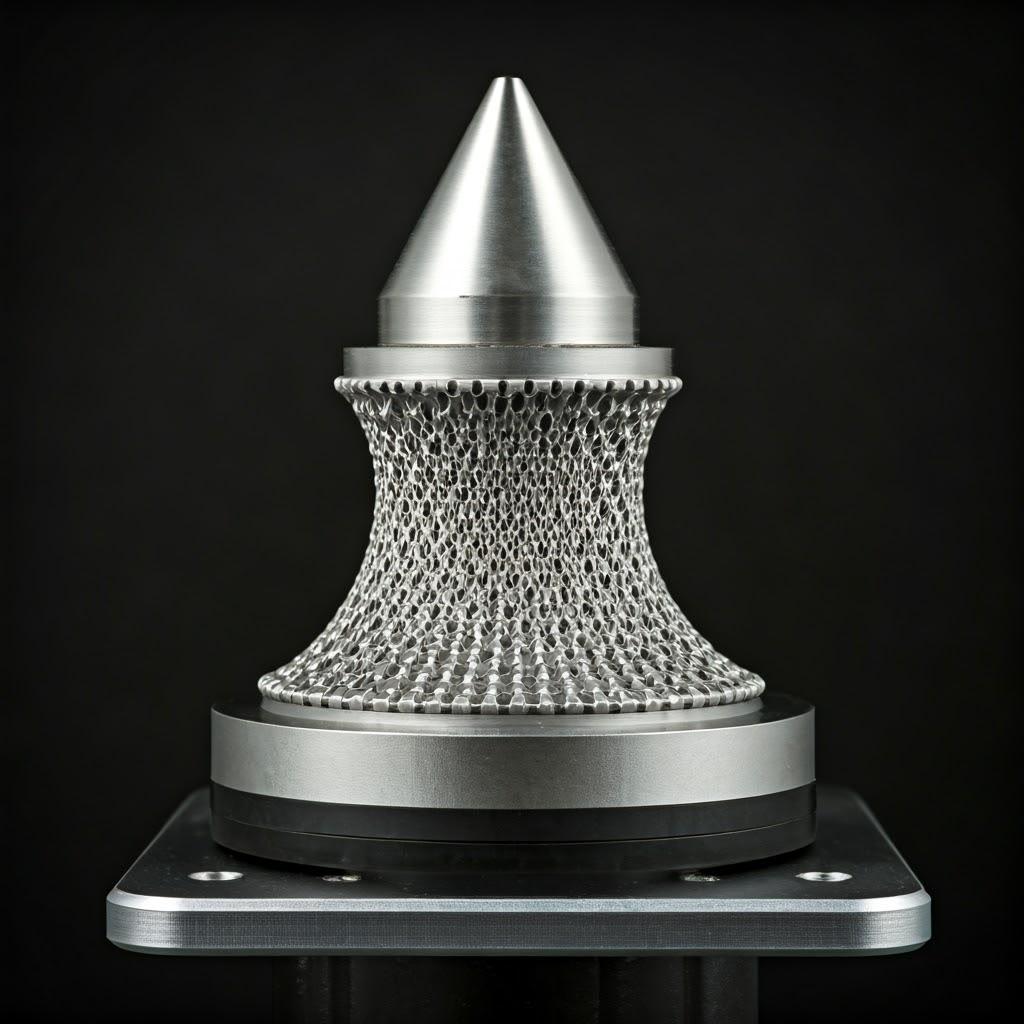
Wymagania dotyczące przetwarzania końcowego
While metal 3D printing offers near-net-shape manufacturing capabilities, post-processing steps are often necessary to achieve the final desired properties, surface finish, and dimensional accuracy for complex ventilation system nozzles. Common post-processing requirements include:
- Usunięcie konstrukcji wsporczej: Support structures, essential for printing complex geometries, need to be carefully removed after the build is complete. This can be done manually, mechanically, or through chemical dissolution, depending on the material and support type.
- Obróbka cieplna: Heat treatment processes are often required to relieve internal stresses, improve mechanical properties (such as hardness and tensile strength), and achieve the desired microstructure of the metal. The specific heat treatment cycle depends on the alloy being used.
- Wykończenie powierzchni: To achieve smoother surfaces, reduce roughness, or prepare the parts for coatings, various surface finishing techniques can be employed:
- Media Blasting: Used to remove loose powder, improve surface uniformity, and create a matte finish.
- Polerowanie: Mechanical or chemical polishing can achieve mirror-like finishes for applications requiring smooth airflow or aesthetic appeal.
- Wykańczanie wibracyjne: A cost-effective method for deburring and achieving a smoother surface on multiple parts simultaneously.
- Obróbka CNC: For critical features requiring very tight tolerances or specific geometries that are difficult to achieve directly through 3D printing, precision CNC machining can be used as a secondary operation.
- Coating and Surface Treatments: Depending on the application environment, coatings may be applied to enhance corrosion resistance, wear resistance, or other specific properties. Examples include anodizing, painting, or specialized metallic coatings.
- Inspection and Quality Control: Thorough inspection using techniques like coordinate measuring machines (CMM), laser scanning, and non-destructive testing (NDT) is crucial to ensure that the final parts meet the required dimensional accuracy, surface finish, and material integrity standards.
The specific post-processing steps required for complex ventilation system nozzles will depend on the application, the material used, and the desired final specifications. Consulting with an experienced metal 3D printing service provider like Metal3DP ensures that the appropriate post-processing techniques are employed to achieve high-quality, functional parts.
Common Challenges and How to Avoid Them
While metal 3D printing offers numerous advantages, certain challenges can arise during the process of manufacturing complex ventilation system nozzles. Understanding these potential issues and implementing preventative measures is crucial for successful outcomes.
- Wypaczenia i zniekształcenia: Thermal stresses during the printing process can lead to warping or distortion of the part, especially for large or complex geometries.
- How to Avoid: Optimize part orientation, use appropriate support structures, control build chamber temperature, and consider stress-relieving heat treatments.
- Trudności związane z usuwaniem struktury wsparcia: Intricately designed nozzles may require complex support structures that can be challenging to remove without damaging the part.
- How to Avoid: Design parts with self-supporting angles, utilize dissolvable support materials where applicable, and carefully plan support placement.
- Porosity and Density Issues: Inconsistent melting or insufficient laser power can lead to porosity within the printed part, affecting its mechanical properties.
- How to Avoid: Optimize printing parameters (laser power, scan speed, layer thickness), ensure high-quality metal powders with good flowability (as provided by Metal3DP), and maintain a controlled build environment.
- Surface Roughness Exceeding Requirements: The as-printed surface finish may not meet the requirements for certain applications, leading to increased friction or reduced aerodynamic performance.
- How to Avoid: Optimize build orientation, use thinner layers, and plan for appropriate post-processing techniques like polishing or machining.
- Dimensional Inaccuracies: Deviations from the intended dimensions can occur due to shrinkage, thermal expansion, or machine calibration issues.
- How to Avoid: Calibrate the 3D printer regularly, compensate for material shrinkage in the design phase, and work with a provider that has robust quality control processes.
- Material Property Variations: Inconsistent melting or solidification can lead to variations in the mechanical properties throughout the printed part.
- How to Avoid: Utilize optimized printing parameters, ensure uniform powder bed packing, and consider heat treatment to homogenize material properties.
- Rozważania dotyczące kosztów: Metal 3D printing can be more expensive than traditional methods for high-volume production.
- How to Avoid: Focus on applications where the unique benefits of metal 3D printing (design complexity, lightweighting, customization) justify the cost, optimize designs for efficient printing, and explore volume discounts with your service provider.
By being aware of these potential challenges and implementing appropriate design and process optimization strategies, manufacturers can effectively leverage metal 3D printing to produce high-quality complex ventilation system nozzles that meet their specific performance requirements.

How to Choose the Right Metal 3D Printing Service Provider
Selecting the right metal 3D printing service provider is a critical decision that can significantly impact the quality, cost, and lead time of your complex ventilation system nozzles. Here are key factors to consider when evaluating potential partners:
- Material Capabilities: Ensure the provider offers the specific metal alloys required for your application, such as AlSi10Mg or AlSi7Mg. Verify the quality and traceability of their powders. A provider like Metal3DP with a wide range of high-performance metal powders is a strong contender.
- Printing Technology and Equipment: Understand the types of metal 3D printing technologies they employ (e.g., DMLS, SLM, EBM). Different technologies offer varying levels of precision, surface finish, and build volume. Inquire about the age and maintenance of their equipment, as this can affect the reliability and accuracy of the printed parts.
- Design and Engineering Support: A good service provider should offer design consultation and optimization services to help you tailor your nozzle designs for efficient metal 3D printing. They should be knowledgeable in design for additive manufacturing (DfAM) principles.
- Post-Processing Services: Determine if the provider offers the necessary post-processing services, such as support removal, heat treatment, surface finishing (polishing, blasting), and CNC machining. A comprehensive suite of in-house services can streamline the manufacturing process.
- Quality Assurance and Certifications: Inquire about their quality control procedures, inspection methods, and any relevant industry certifications (e.g., ISO 9001, AS9100 for aerospace). Robust quality assurance processes are essential for ensuring the reliability and performance of your complex ventilation system nozzles.
- Build Volume and Capacity: Ensure the provider has sufficient build volume and production capacity to handle your project requirements, both for prototyping and potential future scaling.
- Czas realizacji: Discuss typical lead times for similar projects, from design finalization to part delivery. Understand their scheduling and production planning processes.
- Cost Structure and Transparency: Obtain a clear breakdown of the pricing, including printing costs, material costs, post-processing fees, and any applicable tooling or setup charges. A transparent pricing structure helps avoid unexpected costs.
- Communication and Customer Support: Evaluate the responsiveness and clarity of their communication. A proactive and collaborative partner will ensure a smooth and efficient project workflow.
- Doświadczenie w branży: Consider the provider’s experience in manufacturing parts for your specific industry (e.g., aerospace, automotive, medical). Industry-specific knowledge can be invaluable in understanding your application requirements.
- References and Case Studies: Request references or case studies of similar projects they have undertaken. This can provide insights into their capabilities and customer satisfaction levels.
By carefully evaluating these factors, you can select a metal 3D printing service provider that aligns with your project needs and ensures the successful production of high-quality complex ventilation system nozzles.
Cost Factors and Lead Time
Understanding the factors that influence the cost and lead time for metal 3D printed complex ventilation system nozzles is crucial for effective project planning and budgeting.
Czynniki kosztowe:
- Koszty materiałowe: The cost of the metal powder is a significant factor. Different alloys have varying prices based on their composition, properties, and market availability. Providers like Metal3DP offer a range of high-quality powders at competitive prices.
- Czas budowy: Longer print times translate to higher machine usage costs and energy consumption. Build time is influenced by part volume, complexity, layer thickness, and the number of parts being printed simultaneously.
- Koszty przetwarzania końcowego: The extent of post-processing required (support removal, heat treatment, surface finishing, machining) significantly impacts the overall cost. Complex geometries often necessitate more extensive support structures and post-processing.
- Machine and Labor Costs: The hourly rates for operating the 3D printer and the labor involved in setup, monitoring, and post-processing are factored into the cost.
- Quantity and Volume: While metal 3D printing excels at low to medium volume production and customization, higher volumes may benefit from economies of scale, potentially reducing the per-part cost.
- Złożoność projektu: Intricate designs that require extensive support structures or specialized printing parameters may incur higher costs. Optimizing designs for additive manufacturing can help mitigate this.
- Quality Assurance and Inspection: Stringent quality control procedures and detailed inspection processes can add to the overall cost but are essential for critical applications.
Lead Time Factors:
- Part Complexity and Size: More complex and larger parts typically require longer build times, extending the overall lead time.
- Dostępność materiałów: The availability of the specific metal powder required can impact the start of the printing process.
- Machine Availability and Scheduling: The service provider’s current workload and the availability of suitable 3D printers will influence the scheduling and lead time.
- Post-Processing Time: The time required for post-processing steps like heat treatment and surface finishing can add significant time to the overall lead time.
- Shipping and Logistics: The time taken for shipping the finished parts to your location needs to be considered in the overall lead time.
By understanding these cost and lead time factors, you can work with your metal 3D printing service provider to optimize the design and manufacturing process for your complex ventilation system nozzles, balancing performance requirements with budget and time constraints.

Często zadawane pytania (FAQ)
Here are some common questions engineers and procurement managers have regarding the use of metal 3D printing for complex ventilation system nozzles:
- Q: Can metal 3D printed nozzles achieve the same strength and durability as traditionally manufactured nozzles?
- A: Yes, when the appropriate metal powder is used and the printing process is optimized, metal 3D printed parts can achieve comparable or even superior strength and durability to those manufactured using traditional methods. Heat treatment and other post-processing steps further enhance their mechanical properties. Metal3DP’s high-performance metal powders are designed to deliver excellent mechanical properties.
- Q: What is the typical turnaround time for a batch of custom metal 3D printed ventilation nozzles?
- A: Lead times can vary depending on the complexity of the design, the size and quantity of the nozzles, the material used, and the required post-processing. For prototypes, turnaround times can be as short as a few days, while larger production runs may take several weeks. It’s best to discuss specific lead times with your chosen service provider.
- Q: Is metal 3D printing cost-effective for producing ventilation system nozzles?
- A: Metal 3D printing is particularly cost-effective for complex designs, low to medium volume production, and customized parts where traditional tooling costs would be prohibitive. For very high volumes of simple designs, traditional methods may still be more economical. However, the benefits of design freedom, lightweighting, and rapid iteration often outweigh the initial cost considerations.
Wnioski
Metal 3D printing is revolutionizing the design and manufacturing of complex ventilation system nozzles, offering unprecedented opportunities for performance optimization, lightweighting, and customization across a wide range of industries. By leveraging the design freedom and material versatility of additive manufacturing, engineers can create intricate nozzle geometries tailored to specific airflow requirements, leading to improved efficiency and system performance.
Partnering with an experienced and reliable metal 3D printing service provider like Metal3DP ensures access to high-quality metal powders, advanced printing technologies, and comprehensive post-processing capabilities. From aerospace to medical and industrial applications, the ability to produce complex, high-performance ventilation system nozzles through metal 3D printing is driving innovation and enabling next-generation manufacturing solutions. Contact Metal3DP today to explore how their expertise can power your organization’s additive manufacturing goals for ventilation systems and beyond.
Udostępnij
MET3DP Technology Co., LTD jest wiodącym dostawcą rozwiązań w zakresie produkcji addytywnej z siedzibą w Qingdao w Chinach. Nasza firma specjalizuje się w sprzęcie do druku 3D i wysokowydajnych proszkach metali do zastosowań przemysłowych.
Zapytaj o najlepszą cenę i spersonalizowane rozwiązanie dla Twojej firmy!
Powiązane artykuły
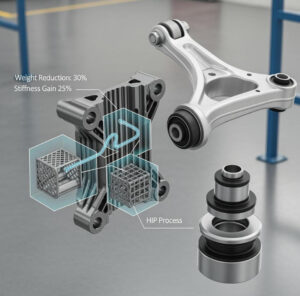
Metal 3D Printed Subframe Connection Mounts and Blocks for EV and Motorsport Chassis
Czytaj więcej "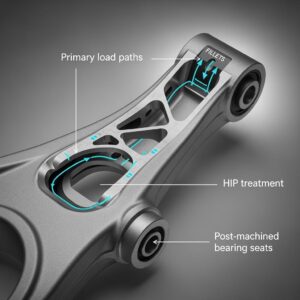
Metal 3D Printing for U.S. Automotive Lightweight Structural Brackets and Suspension Components
Czytaj więcej "Informacje o Met3DP
Ostatnia aktualizacja
Nasz produkt
KONTAKT
Masz pytania? Wyślij nam wiadomość teraz! Po otrzymaniu wiadomości obsłużymy Twoją prośbę całym zespołem.








